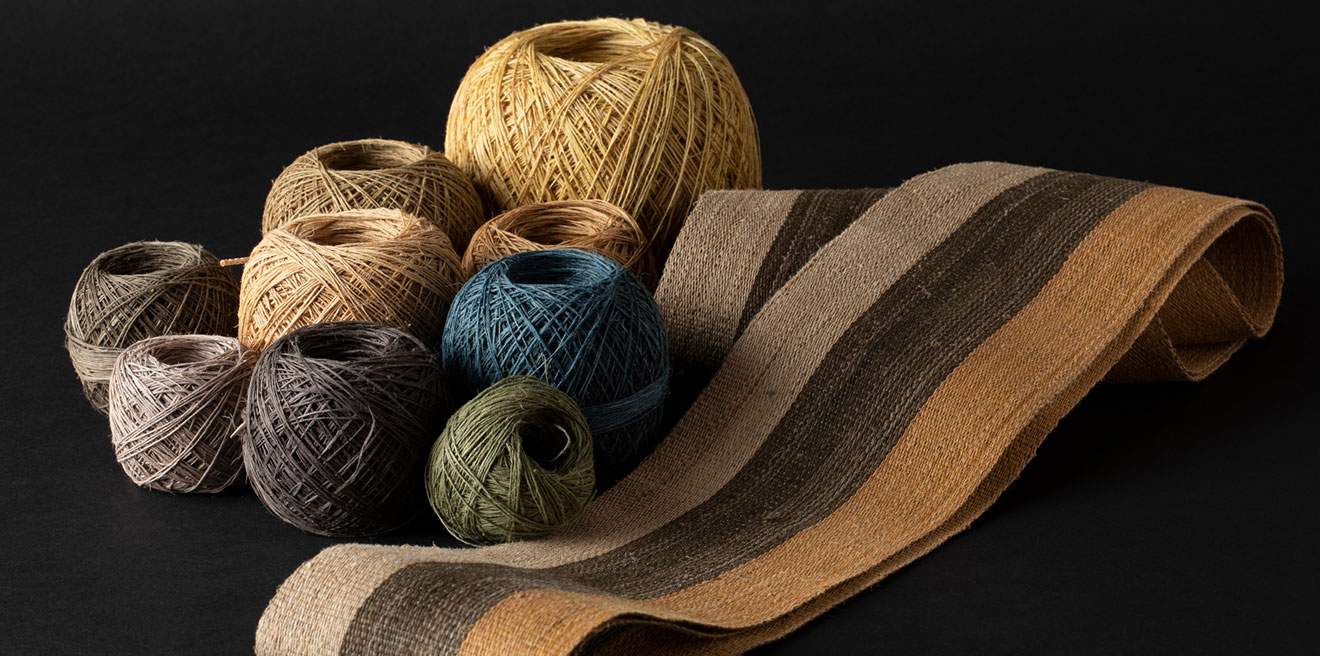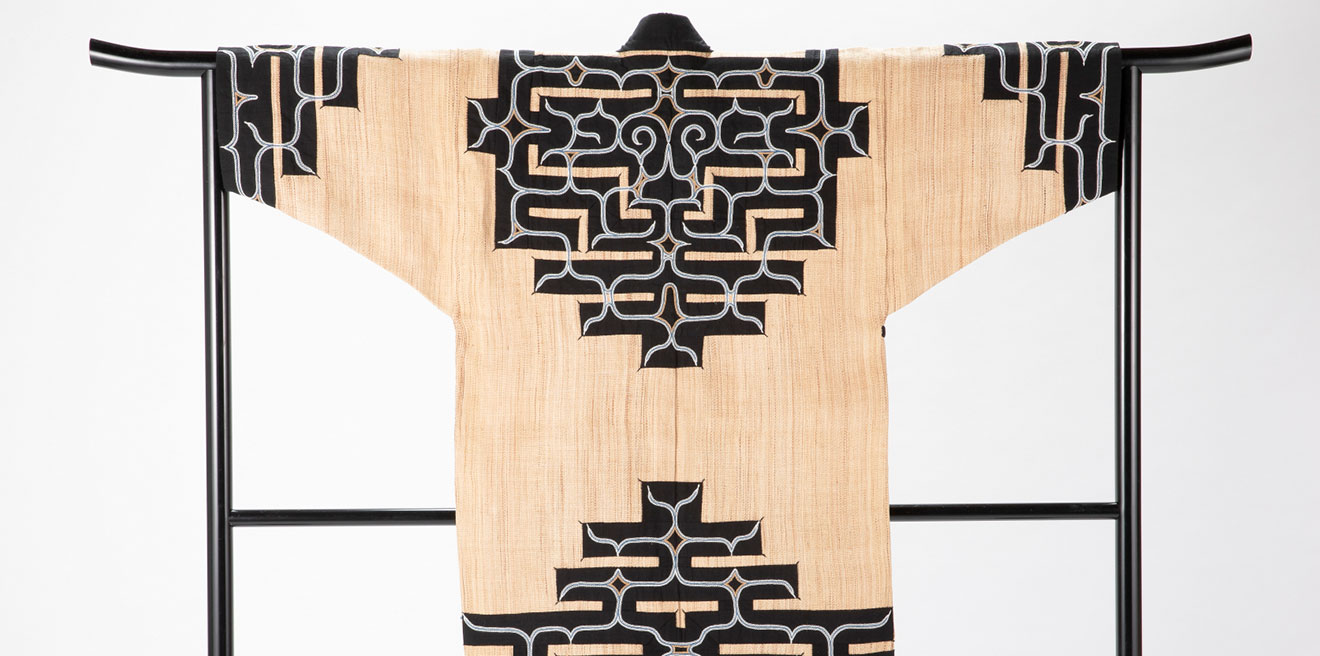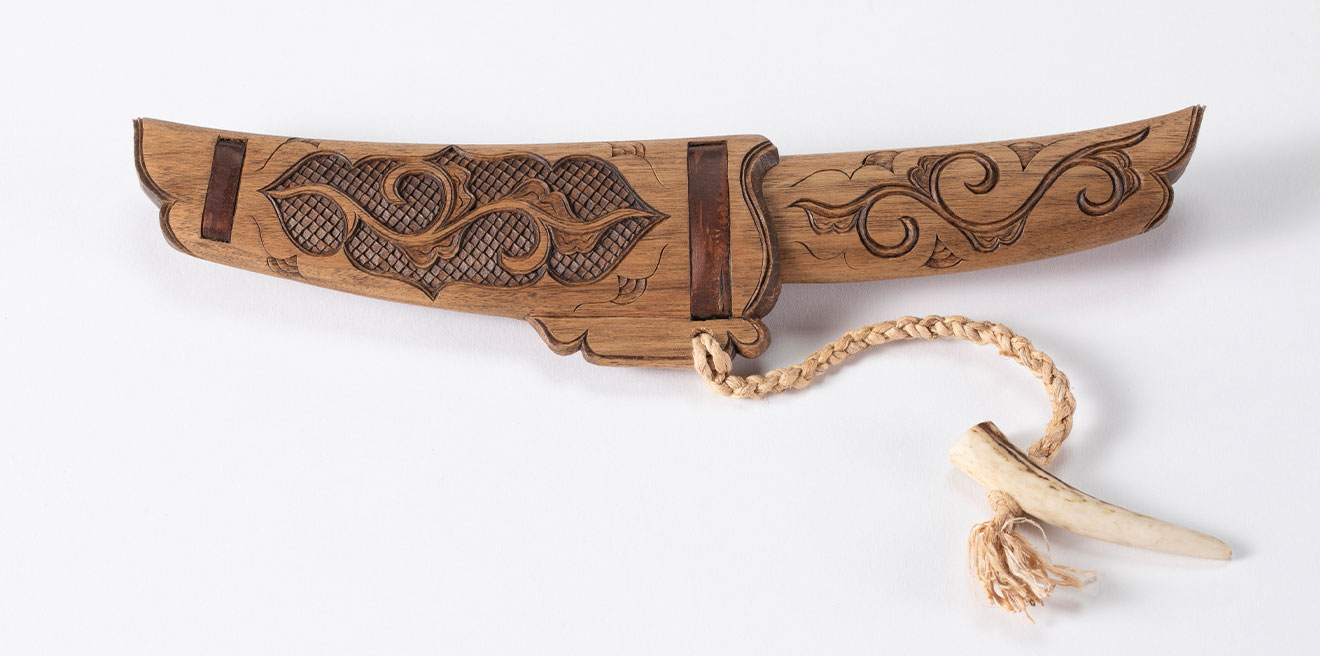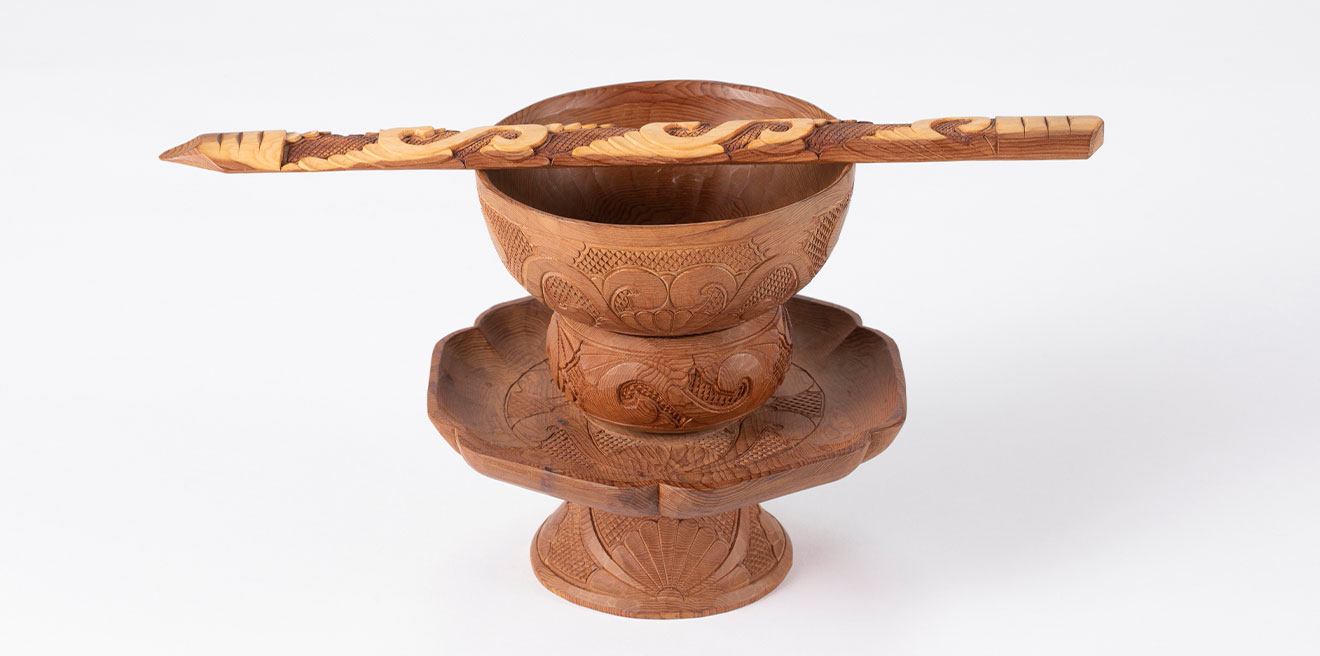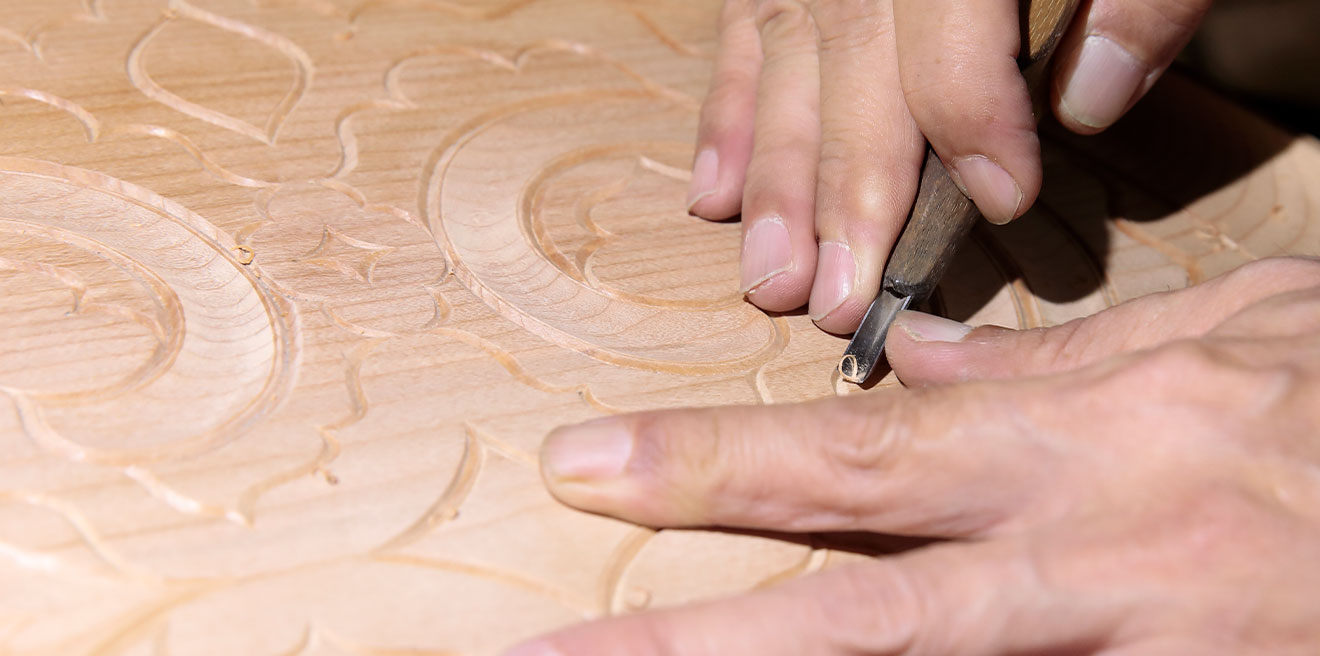Cloth woven with techniques passed down from hand to hand
Attus is fabric woven with fibers from the inner bark of trees like the lobed elm. Nibutani Attus, woven with traditional techniques passed down in the Nibutani region of Biratori, is a designated Traditional Craft Product of Japan.
Because of its excellent breathability, water resistance, and durability, it became an important trading item with Honshu island in the Edo period (1603-1867) and was known as one of the Saru River basin's key products in the Meiji period (1868-1912).
It takes a tremendous amount of time and labor to weave the fabric, and in Nibutani, craftspeople still get harvest the bark used as raw materials from the mountains and use the same style of loom that was used one hundred years ago.
The texture of the natural material is appealing, and attus is used today to make traditional Ainu clothing, as well as traditional obi sashes, wallets, coasters, and more.
Production processes
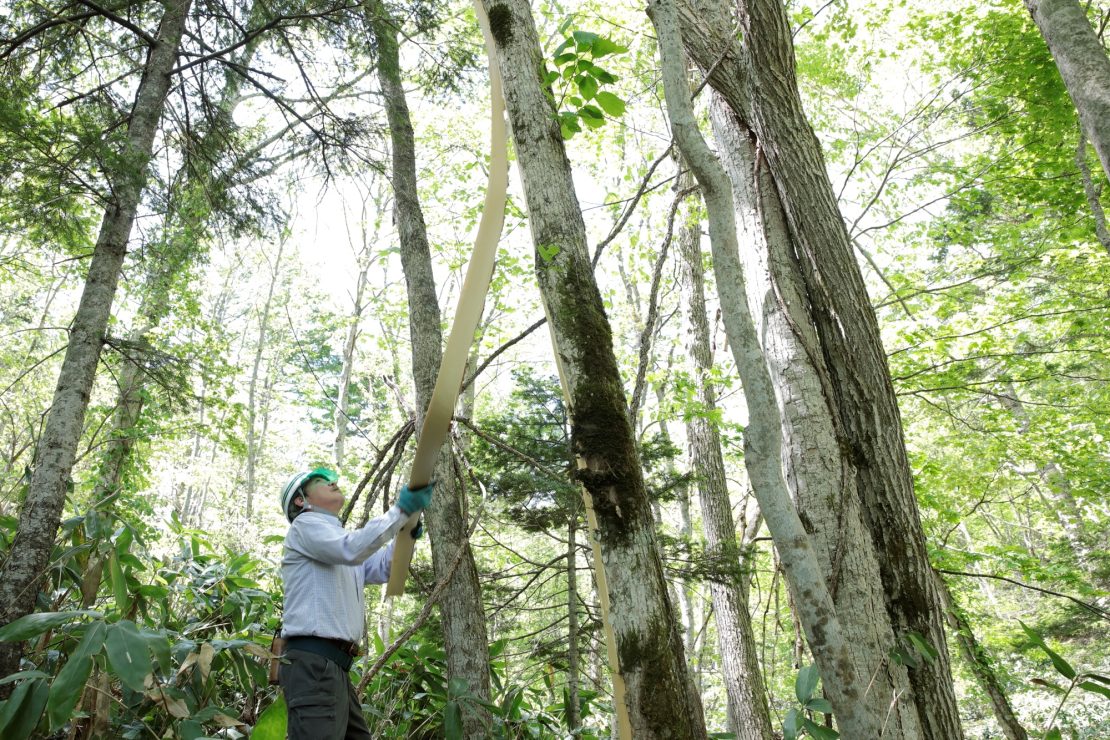
1. Peeling tree bark
A slit is cut in the tree bark and it is peeled away from the bottom up.
The best time for this is at the end of the damp rainy season, and it is often done after cutting down a tree.
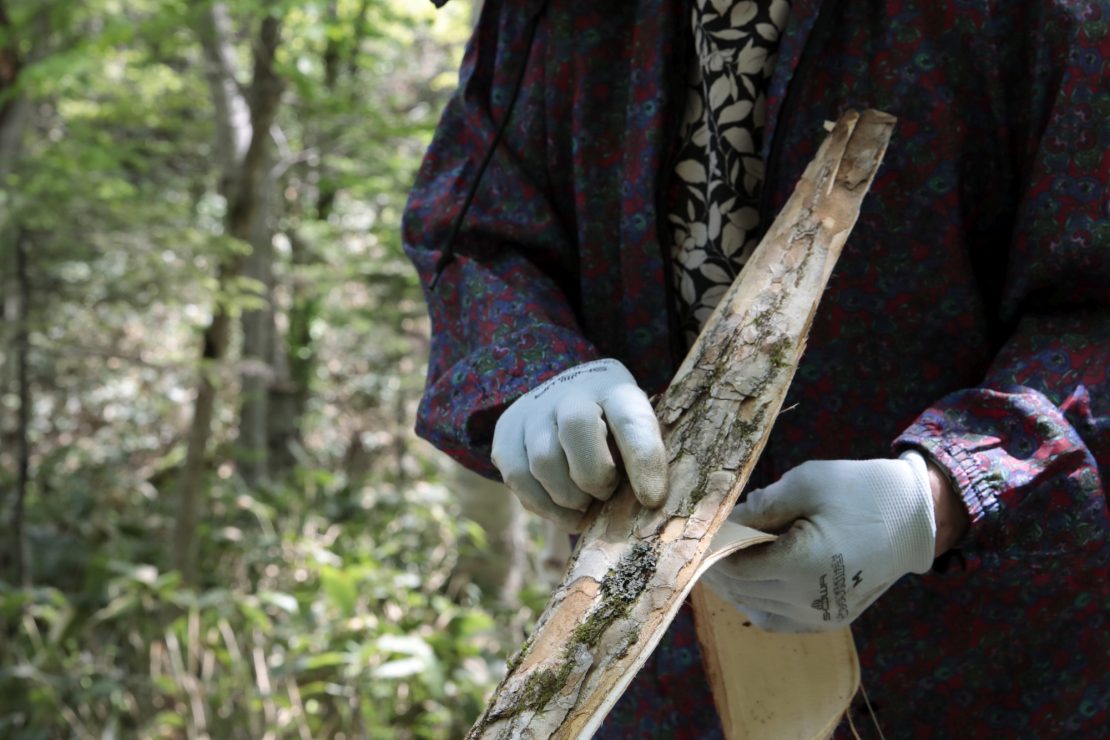
2. Removing rough bark
The rough outer bark is removed from the inner bark, which is the source of fibers.
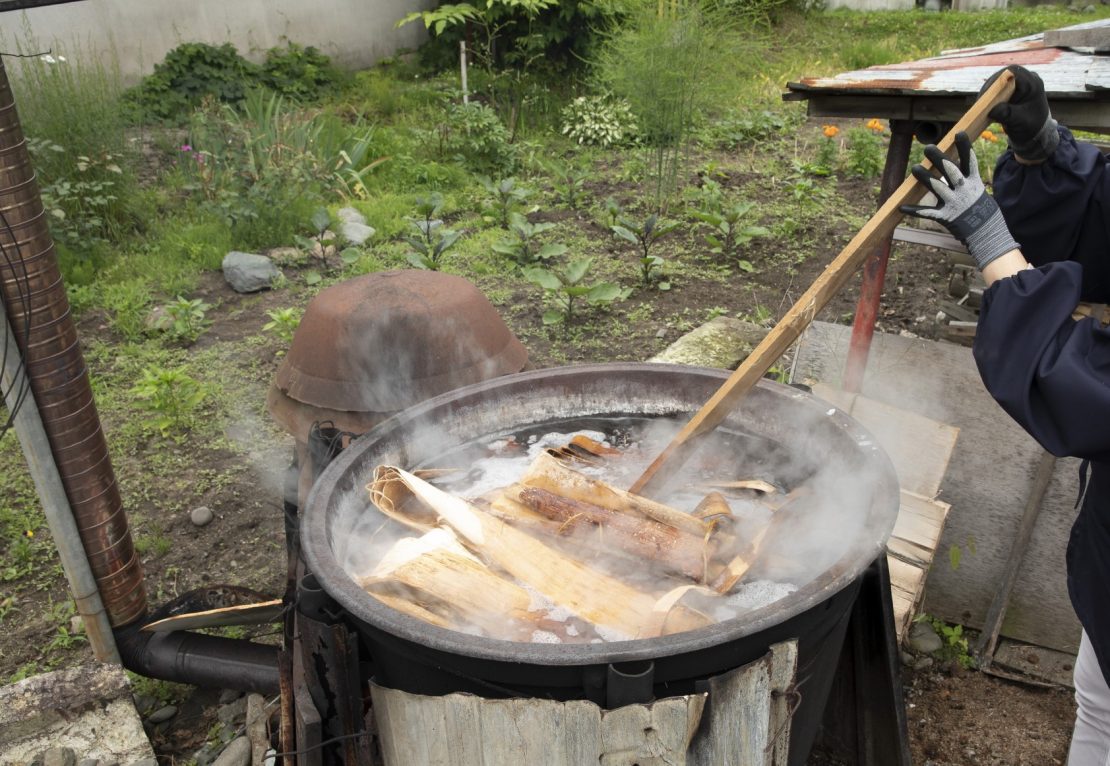
3. Processing tree bark
To soften the bark, it is steeped for hours in a pot with agents like lye.
Some methods soak the bark in a swamp or hot spring for around a week.
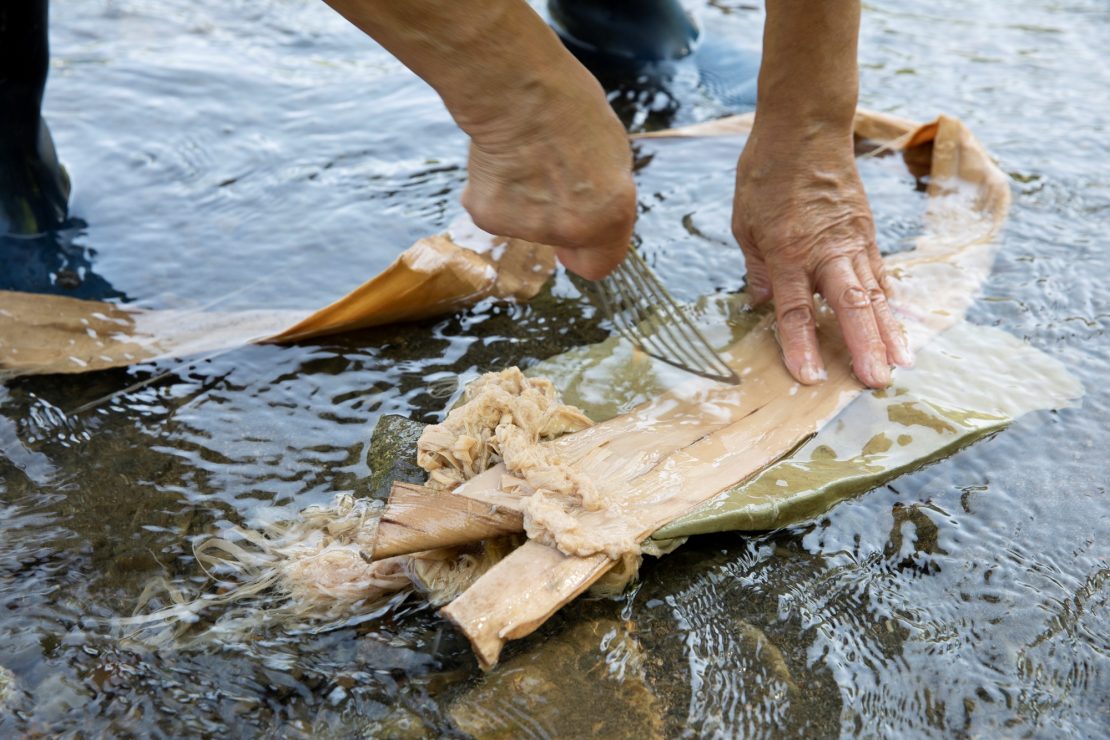
4. Washing
The inner bark is washed, sometimes in a river, to remove slippery remnants.
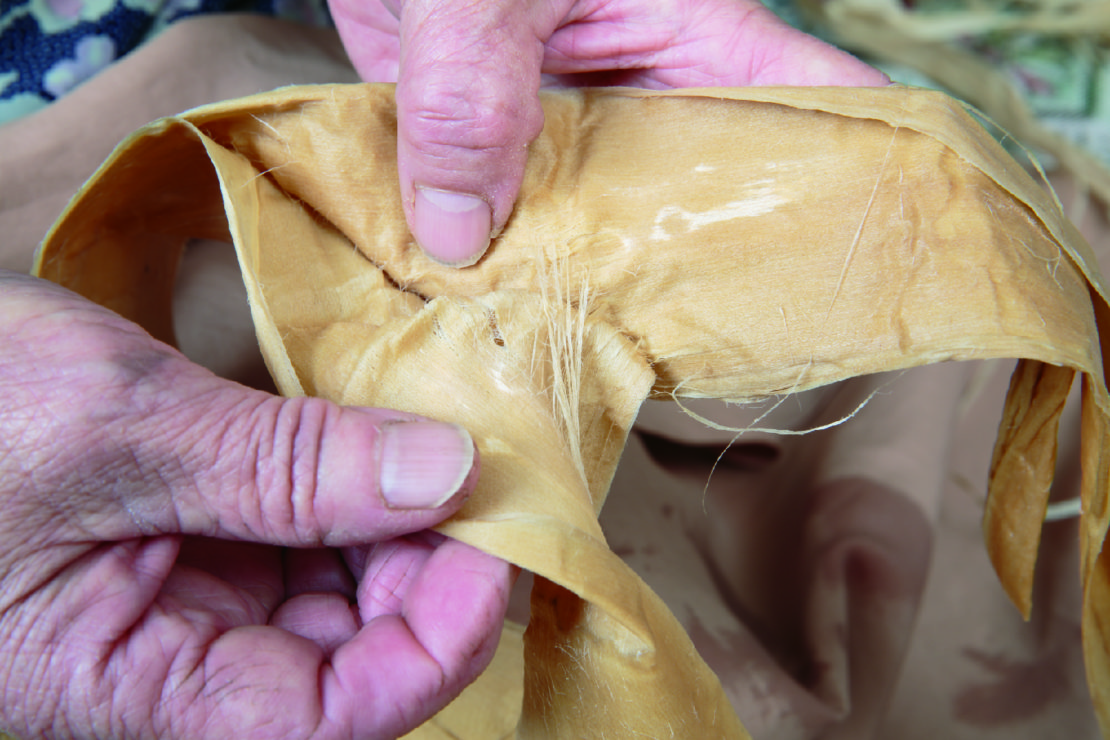
5. Peeling the inner bark
The inner bark is made of many thin layers, which are peeled away one by one by rubbing.
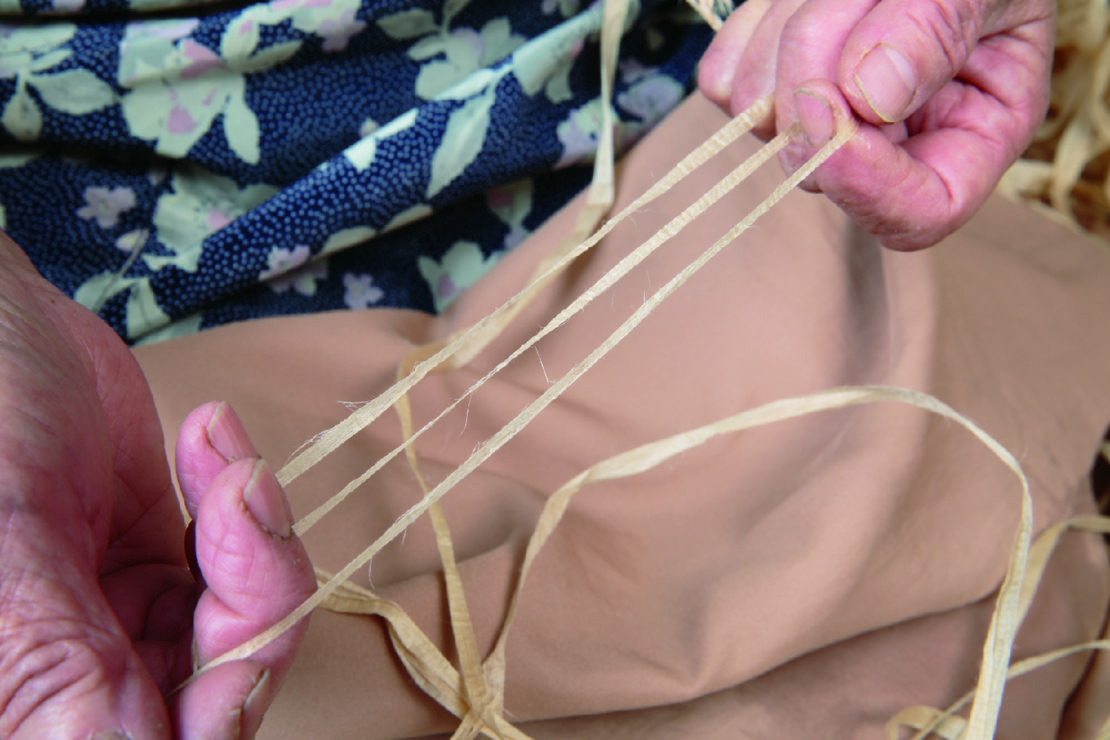
6. Shredding and spinning the inner bark into thread
Using the fingertips, weavers shred the inner bark into regular widths, spin it into thread, and join the threads carefully so that the knots do not stand out when weaving.
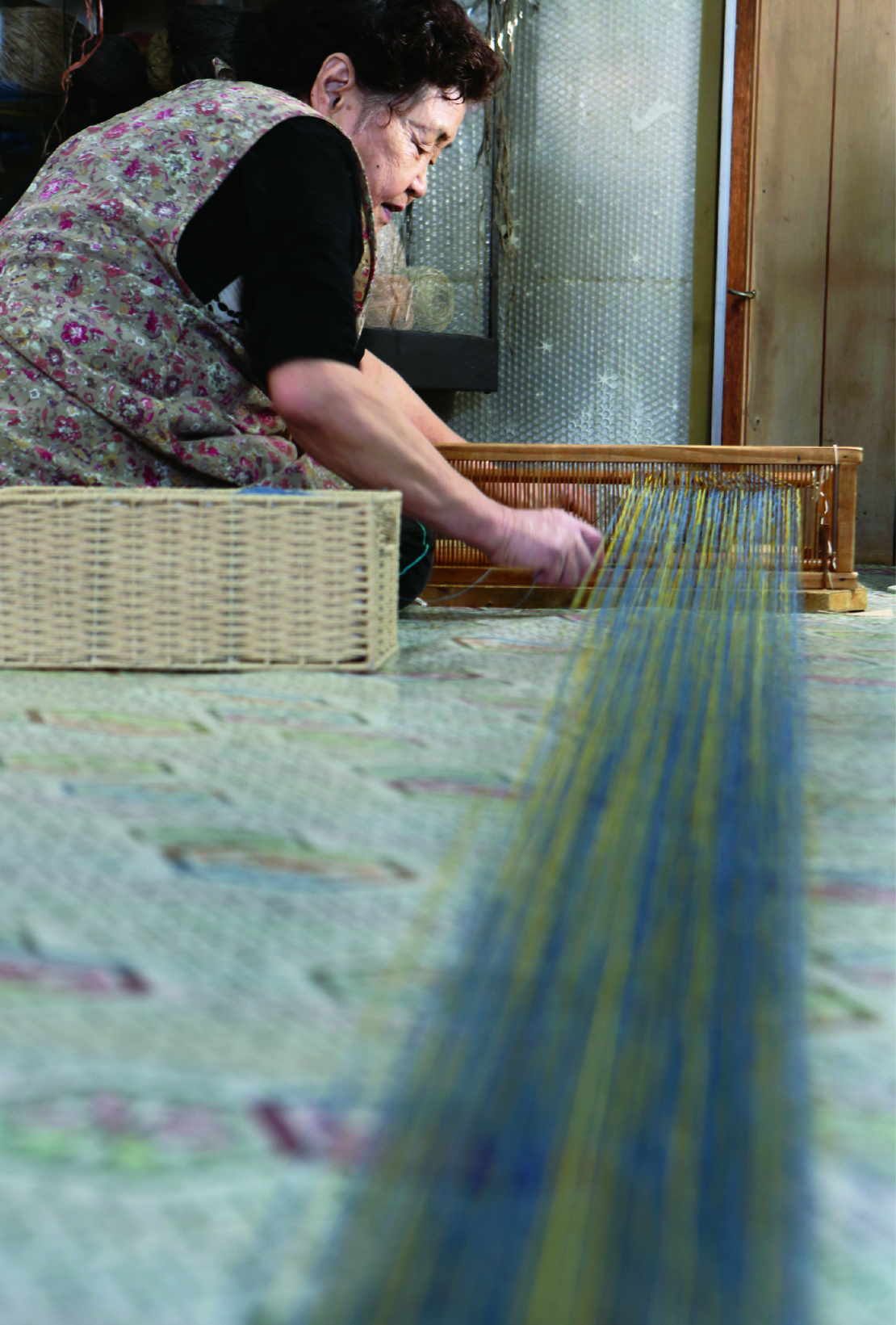
7. Thread stretching
The threads are stretched out from the ball and wrapped around a pole several meters away, while the other end is loaded into the loom.
This is the point where colors and patterns for the warp are decided.
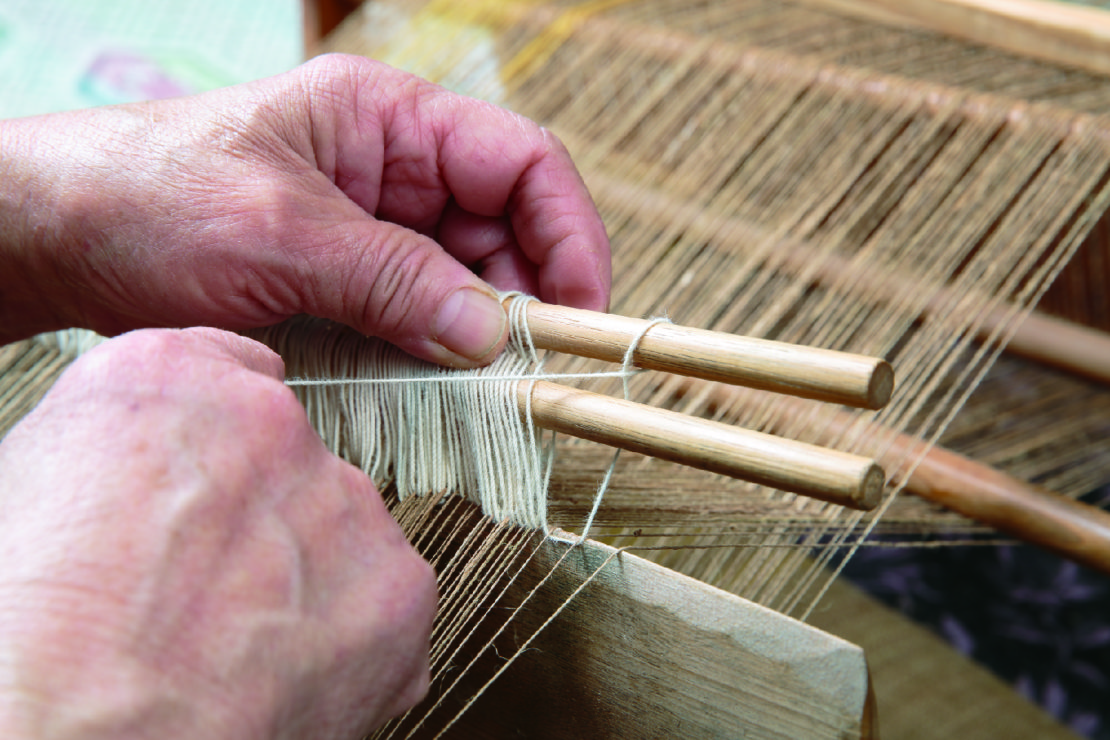
8. Knitting the heddle (guide threads)
The lower warp threads are raised in order with cotton threads, which are then wrapped in a figure-eight over a heddle rod.
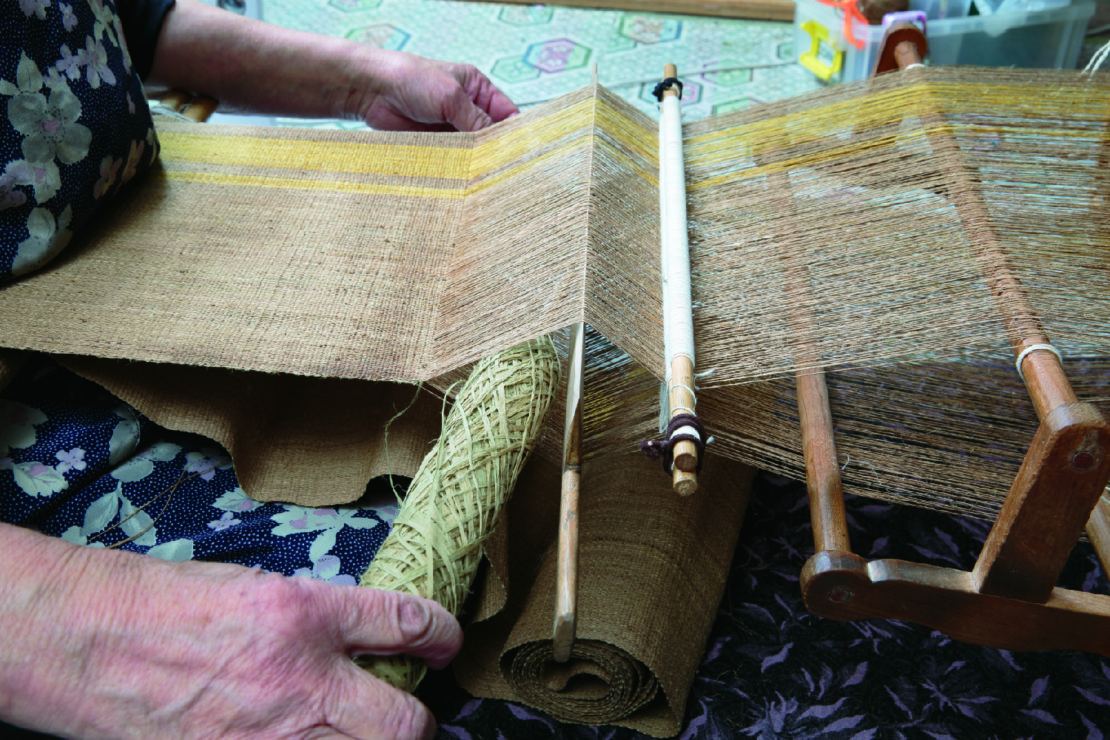
9. Thread the weft and tighten with a pera (paddle)
The heddle guide allows the upper and lower threads of the warp to be opened to allow the shuttle to pass the weft threads through.
Each time the weft passes through, the upper and lower warp threads are alternated, and the weave is tightened with the pera.
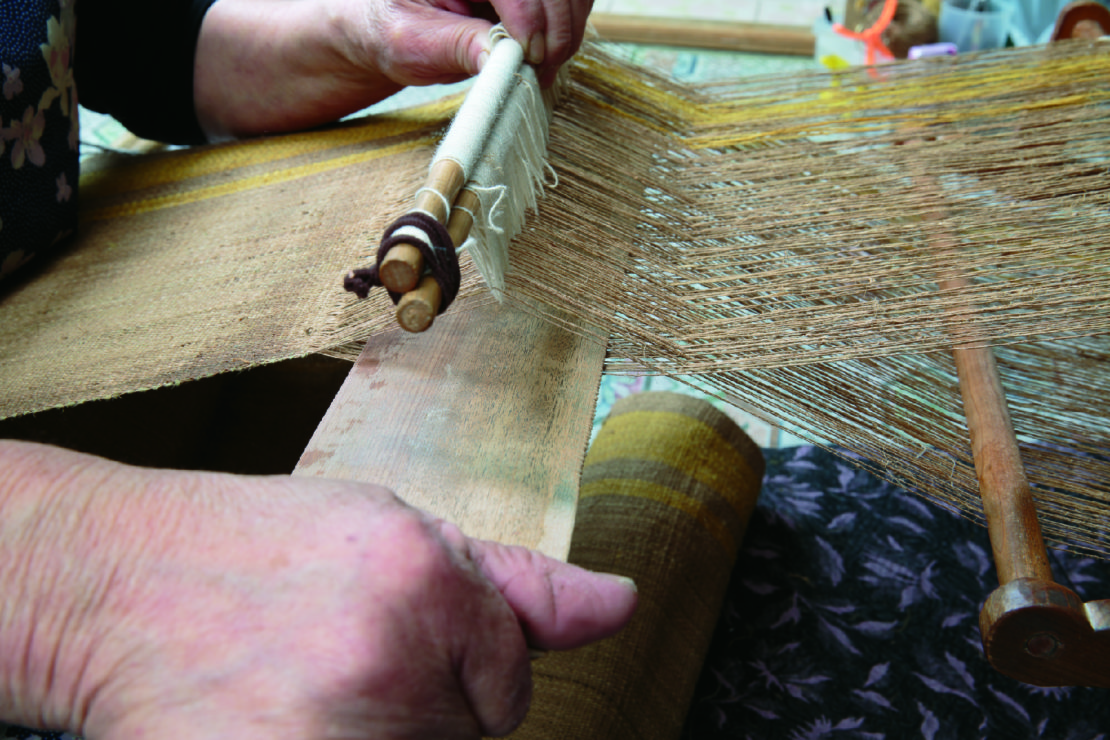
The finished fabric, as well as any clothing or sashes made from it, is called attus.
The thread may be used as-is or dyed using botanical dyes.
